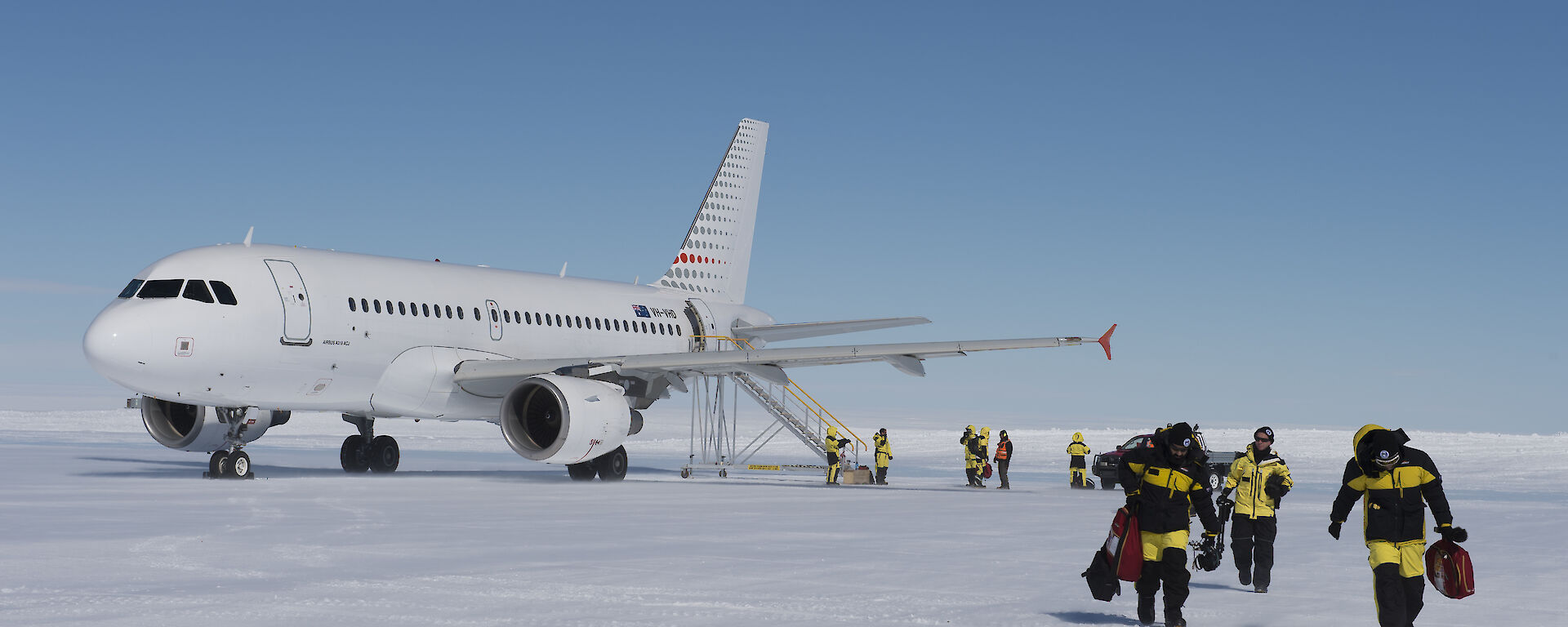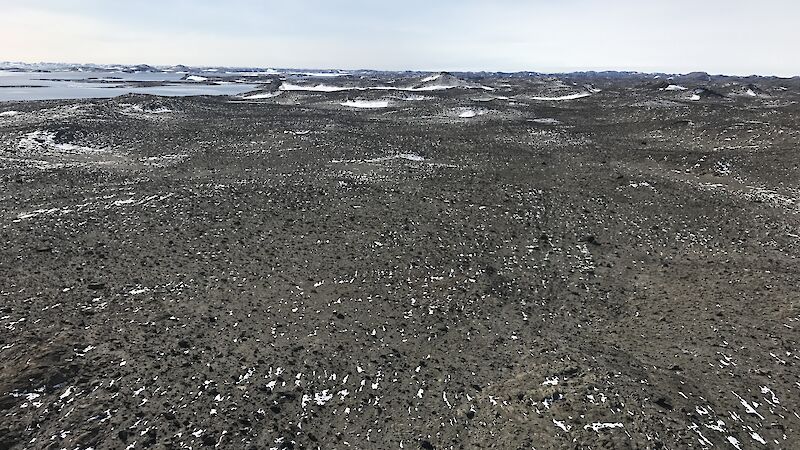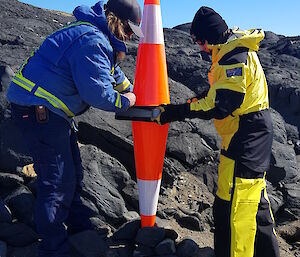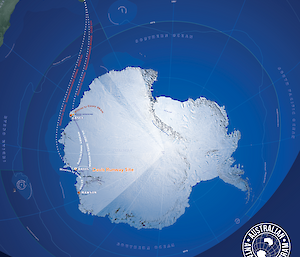Update 25 November 2021
Following detailed environmental and economic assessments, in November 2021 the Federal Environment Minister announced the Government’s decision not to proceed with the proposal.
Project background
The Australian Government’s 2016 Australian Antarctic Strategy and 20 Year Action Plan committed to a range of activities to support Australia’s national Antarctic interests including investigating year-round air access between Australia and Antarctica.
In May 2018, the Australian Government announced its intention to construct a paved runway near Davis research station, subject to environmental and other Government approvals.
In December 2019, the Australian Government committed additional funding over two-and-a-half years to advance the design and environmental assessments required for the Davis Aerodrome Project.
Aviation in Antarctica
Australia has a long history of aviation in Antarctica and aviation is a key component of operations on the icy continent.
Australia’s current Antarctic aviation system consists of a summer-only link from Hobart to the Wilkins Aerodrome ice runway, approximately 70 km inland of Casey research station.
Intercontinental flights to Wilkins are limited to the beginning and end of summer, with a six-week closure in mid-summer when warmer temperatures cause the ice surface to weaken.
Intracontinental flights to other stations and field sites use aircraft such as DHC-6 Twin Otters, Basler BT-67 capable of landing on specially prepared ski ways.
Currently, access to Antarctica in winter is difficult, with temperatures dropping to −40°C at Davis research station.
Capability boost
If approved, the construction of a paved runway at Davis research station would represent a significant capability boost that would revolutionise our scientific activities and enhance Australia’s leadership and long-term interests in the region.
An aviation capability that regularly delivers scientists and equipment to Antarctica offers a number of significant science benefits, including unprecedented opportunities to monitor change real-time, and improve the accuracy of forecast models, sea level rise predictions and climate change impacts.
Access to the continent across all seasons would allow scientists to directly investigate processes through the full cycle of changes including during the cold and dark winter months. It would also provide the opportunity for study of wildlife, such as krill, penguins, seals and seabirds, through their full annual life cycle.
The proposed aerodrome
After three field seasons of geotechnical and environmental investigations, the Australian Antarctic Division has identified a suitable site for a runway in the Vestfold Hills region of East Antarctica, approximately six kilometres from Davis research station.
The proposed aerodrome site is a triangular area of rounded rocky hills that are predominantly ice-free and cover an area of approximately 410 square kilometres. The proposed aerodrome would take up approximately 2 square kilometres.
The proposed Vestfold Hills site has
- Coastal ice-free area with favourable geotechnical characteristics
- Proximity to Davis research station (4.5 km)
- A relatively mild and benign climate
- Meteorological predictability
The runway will be almost 5000 kilometres from Hobart, with a flight time of around six hours. It will be 1400 kilometres from Australia’s existing,summer-only intercontinental ice runway at Wilkins Aerodrome, near Casey research station. The runway would provide greater access to Davis research station and surrounding regions. The station is currently only accessible during the Austral summer by icebreaker or internal flights using small aircraft.
If approved, the proposed Davis aerodrome would be the first paved runway in Antarctica. It is anticipated the aerodrome would become operational around 2040.
The proposed infrastructure includes:
- A 2700 metre paved runway
Capable of accommodating existing and future large aircraft capable of return flight from Australia such as the Boeing 787 Dreamliner (B787), Airbus A330, and the Royal Australian Air Force-operated Boeing C-17A Globemaster III (C-17). - Aviation infrastructure
Including a taxiway, aircraft apron, runway lighting, and associated buildings to accommodate services, such as air traffic and rescue and fire fighting services. - An access road from the station to the aerodrome
- A new wharf
- Temporary station infrastructure to support a population increase during the construction period.
Enabling Infrastructure
The initial focus at Davis station would be to increase the station capacity so it can support the construction and operation of the runway. It is anticipated that construction of the enabling infrastructure would take up to seven years to complete. Infrastructure not required at the completion of aerodrome construction would be decommissioned and the sites rehabilitated.
Studies are currently underway to determine the location of the Davis enabling infrastructure. New infrastructure includes:
- Infrastructure to support a construction phase population of 250 (i.e. an additional 130 personnel)
- Mechanical workshop
- Bulk fuel storage for SAB diesel and JetA1
- A construction hardstand area and storage building
- A construction waste storage area, which would be co-located with the construction hardstand area
- An explosives storage facility
Logistics
Shipping and logistics support for the project would require a combination of large icebreaker and ice-strengthened cargo vessels. It is anticipated that one to two cargo deliveries would be required each year for up to 10 years.
Approximately six additional annual voyages using icebreaker vessels would be required to transport the required number of construction phase and station personnel and station supplies at the beginning and end of each summer season.
The first voyages of the season would be undertaken in October, when sea ice is still present at Davis, and subsequent voyages would typically be undertaken from January, when sea ice has cleared from Davis harbour. As there is limited water depth at Davis, floating barges and tugs would be used to transport materials from the ocean-going vessel to the wharf.
Construction
The paved runway would be constructed from pre-cast concrete pavers, made in Australia, transported by ship and assembled on site. Approximately 11,500 pavers weighing 10 tonne each would be required for the apron, taxiway and runway. The pavers would be transported by barge from the cargo ships, transported to the aerodrome site on trailers and then craned and grouted into place.





